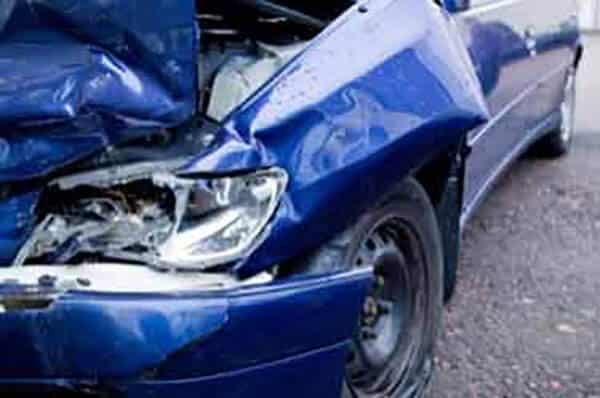Nevada and most other states have at-fault insurance laws or a tort-based system. Michigan, Minnesota, and New York are among the dozen states with no-fault insurance laws.
Theoretically, no-fault laws expedite claims in minor crashes which only involve property damage (a/k/a fender-benders). That claim has never been conclusively proven. But it is certain that no-fault laws increase insurance fraud schemes.
The “swoop and squat” is a good example. Unscrupulous drivers pull out in front of unsuspecting motorists and then slam on their brakes to induce rear-end collisions. In at-fault states like Nevada, Las Vegas personal injury attorneys easily deflate this scam. Standing up for victims is what we do best. But in no-fault states, since responsibility is irrelevant, these scammers just need repair estimates to get paid.
Insurance fraud schemes like this one coast about $40 billion a year. Honest policyholders pay these costs in the form of higher insurance premiums.
Damages in No-Fault vs. At-Fault Insurance Jurisdictions
Moreover, no-fault laws in verbal threshold states, like Florida, often create more litigation than they eliminate. In the Sunshine State, car crash victims are eligible for noneconomic damages if they sustain a “serious” injury. The law only vaguely defines this term. So, car crash litigants spend almost as much time arguing about whether noneconomic damages are appropriate as they do over the extent of loss.
Noneconomic damages are the intangible losses that a car crash or other negligent event cause. These damages include things like:
- Pain and suffering,
- Loss of enjoyment in life,
- Emotional distress, and
- Loss of consortium (companionship and contribution to household affairs).
In at-fault states, all victims are automatically entitled to noneconomic damages. Since they are intangible, most attorneys multiply the economic damages by two, three, or four to establish a fair amount.
The multiplier usually depends on the facts of the case, and specifically the injuries, as well as any legal issues, which are outlined below. Some other factors include the conservative or liberal nature of the jury pool, the judge’s pretrial motion decisions, and the victim/plaintiff’s motivation for an early settlement.
Procedural Differences
In no-fault states, sometimes an adjuster evaluates property damage. Other times, the claimant submits a repair estimate. That’s pretty much it.
In at-fault states, the procedure is much more complex. Without an experienced attorney, victims have almost no chance to obtain fair compensation.
That procedure usually starts with a demand letter. Once medical treatment is at least substantially complete, attorneys demand money in exchange for a liability waiver. If liability is reasonably clear, many car crash claims settle at this point. However, there is almost always some question in this area. If that’s the case, the claim proceeds to the next stage.
That stage involves filing a lawsuit. Right away, the insurance company usually files procedural motions and tries to dismiss the victim/plaintiff’s claim. If these motions fail, and they almost always do, many insurance companies are willing to talk.
Sometimes, the lawsuit continues to the discovery phase. This phase involves things like medical examinations and oral depositions. Sometimes, when it becomes apparent how much evidence the victim/plaintiff has amassed, the insurance company is willing to settle. Other times, however, the case goes even further.
Mediation is usually the final stop on the at-fault insurance state freight train. At mediation, a neutral third party listens to both sides’ arguments and then tries to facilitate a settlement. Mediation has a number of benefits. For example, it shortens the length of the case and gives the litigants more control over the outcome.
If both sides participate in good faith, mediation is usually successful.
Legal Issues in Nevada and Other At-Fault States
As mentioned, the legal issues in a claim often affect the settlement value. So, attorneys must evaluate both the legal aspects of a case and the factual angles.
Sometimes, there is a complete defense. These defenses include doctrines like sudden emergency and last clear chance. This latter doctrine applies in the aforementioned swoop-and-squat fraudulent claims. It also applies in many head-on crash matters.
Basically, if Driver A has a reasonable chance to avoid the collision but fails to do so, Driver A is legally responsible for damages, even if Driver B got a traffic ticket. That opportunity could be changing lanes or applying the brakes.
In the swoop-and-squat, the unscrupulous driver had a reasonable chance to avoid the collision, because this driver-operated recklessly.
Other times, the insurance company has a partial defense. Contributory negligence is a good example. This doctrine shifts responsibility from the tortfeasor to the victim. If a jury finds the victim was partially at fault, the judge will reduce the victim’s damages accordingly.
Contact an Aggressive Attorney
Nevada is not a no-fault insurance state. For a free consultation with an experienced personal injury lawyer in Las Vegas, contact Henness & Haight, Injury Attorneys. Attorneys can connect victims with doctors, even if they have no money or insurance.
